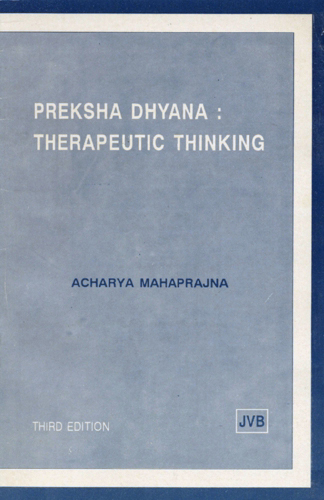Today, mankind, all around the world, has been confronted by a number of acute problems. They are besetting the entire human race, rich and poor, technologically developed or developing, irrespective of one's ancestral religion, creed, colour or country. The universality of these problems is a consequence of industrialisation, technological advancement and over-urbanisation.
Some of these problems, at least, are the result of man's innate propensity to exploit the others as well as his selfishness and bestial urges such as cruelty, retaliation and hate. Human nature is a mixture of both—good and evil; that is, both good and evil are present in all human beings to some degree. For promoting social health, it is necessary to stimulate the good sides and inhibit the bad. It is now abundantly clear that social pressures and regulations are unable to control the bad sides. This can only be achieved from within the individual
A question might be raised as to why people persist in perpetrating immoral acts even though they know that it is wrong to do so. The answer is: the effect of emotion and urge on human actions is stronger than that of theoretical knowledge. Subjugation of the effect of emotion can be achieved by self-discipline and self-mastery. Since the obstruction to self- mastery lies deeper than conscious mind in order to attain it, one must tap power that lies deeper in the sub-conscious. Fortunately, to make the effort to perform this difficult task is inherent in all people. The problem is to find out the right technique to tap that power. As stated before, teachings and theoretical knowledge have little values as a method to attain self-mastery. A total reformation of the individual should emanate from the dept of subconscious and this cannot be imposed from without by legal or social regulations. Instead, every individual must consciously strive to effect his own reformation.
Man's perennial spiritual duty is to overcome the bestial urges and carnal desires; and he has the innate capacity to do so. All that is needed is to develop this potential into a practical reality by strenuous spiritual extension. This spiritual exertion must be made by individual human beings in order to make it an effective means of social change for the better. Every man has to master his own personal self-centredness. The effort required for eradicating the evil consequences is ethical, not intellectual. Therapeutic thinking is such an ethical effort
Therapeutic thinking is a process of catharsis which purges out psychological distortions such as cruelty, hatred, retaliation etc. It is a psycho-therapy to cure physical, mental and emotional sicknesses of the individuals. It is a proper and powerful therapy to annihilate the root causes of all social evils and disorders. Once the root causes of physical diseases, mental imbalances and emotional distortions are removed, there will emerge a state of unprecedented individual and social health Terrorism, militarism, retaliation, exploitation and all other social evils will become things of the past.
Application of therapeutic thinking, auto-suggestion and faith-healing is as ancient as mankind itself. Franz Masmer provided the link between the ancient healing techniques with modern faith-healing. Sigmund Freud, the founder of Psychoanalysis, and later still, Jung applied the technique of suggestion with great success. That suggestion given to patients under deep relaxation can produce striking and significant alterations in their bodily and mental behaviour is proved by ample evidence Actually the healing power lies wholly within the patient's own organism. The healer is merely an agent helping to stimulate this power.
By use of auto-suggestion and intense willing, the practitioner can modify his psychological distortions, change his attitude and behavioural patterns and generally develop his personality.
Prekṣā Dhyāna is a comprehensive system of meditation. Though perception and awareness are primarily used for mental concentration of thought Le. contemplation, is not excluded. Thus, the system of Prekṣā Dhyāna bifurcates into (a) concentration of perception and (b) concentration of thought i.e. "Prekshā" and "Anuprekshā" respectively. In the former technique of meditation, perception is primarily used for concentration, while in the latter the conscious mind is encouraged to concentrate on a thinking process, i.e. contemplation. Both techniques are competent to develop practitioner's conscious reasoning and modify one's attitude and behaviour.
Practice of concentration of thought (anuprekshā) is again twofold: (a) contemplation and reflection of external truths such as transitoriness of all worldly associations and (b) acquistion of desirable virtues and eradication of psychological distortions by therapeutic thinking and auto-suggestion.
More than twenty exercises are given in this book with full instructions for using the therapeutic thinking and auto- suggestion, which enable one to acquire the virtues.
 Acharya Mahaprajna
Acharya Mahaprajna

